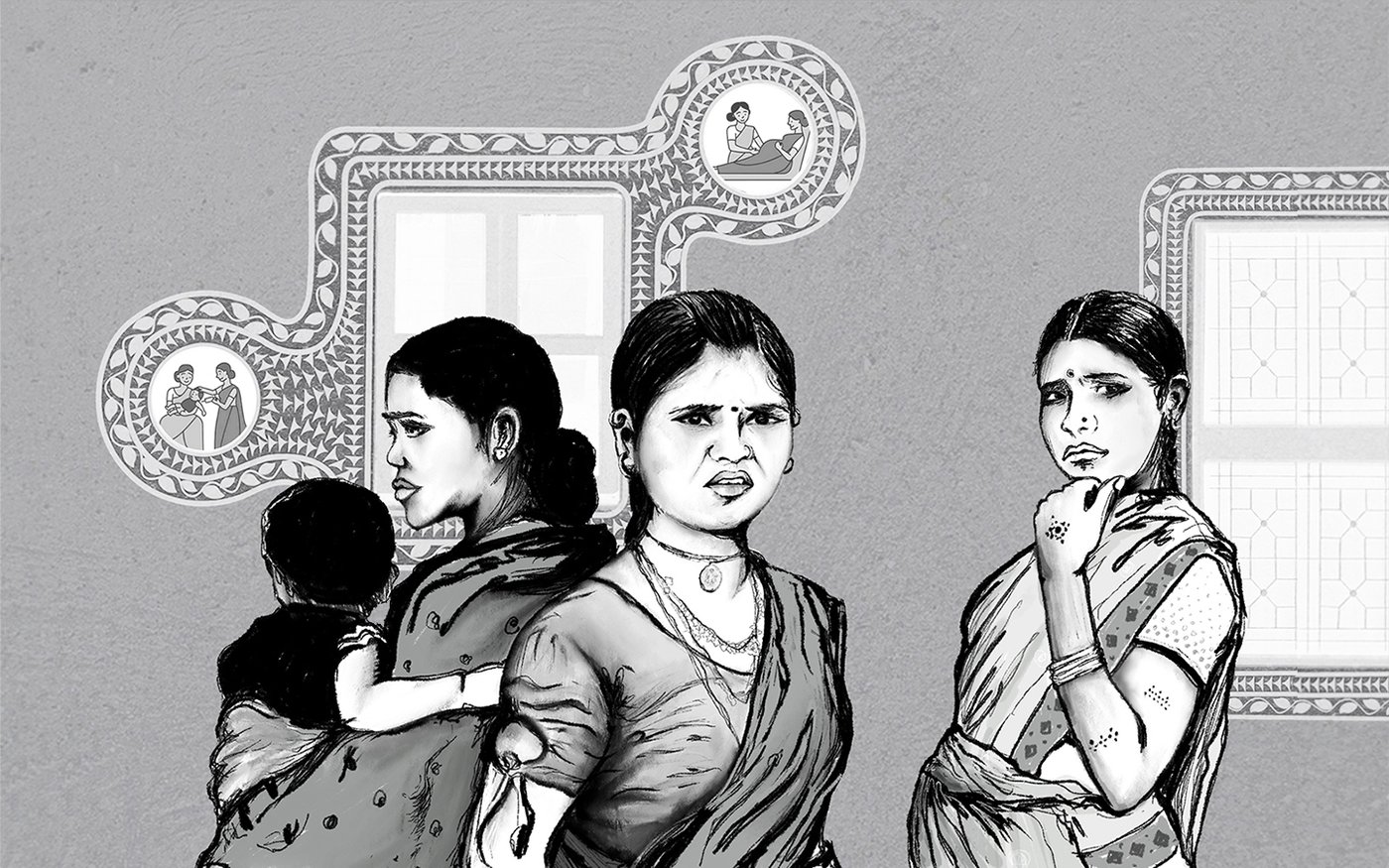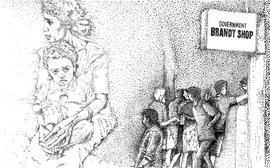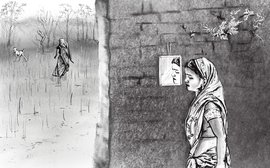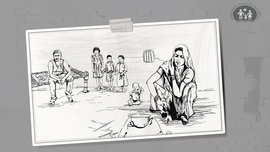When Kamala got pregnant for the fourth time and decided not to keep her baby, her first stop was not the Benoor primary health centre, 30 kilometres from her hamlet. She had only ever travelled as far as the weekly haat , a short walk from her home, and says, “I didn’t even know about this place. My husband found out later.”
Kamala, who is in her early 30s, and her husband Ravi (names changed), 35, both from the Gond Adivasi community, first approached a local 'doctor' not far from their hamlet. "A friend told us about him,” she says. Kamala grows vegetables on a patch near her home which she sells at the haat (market), while Ravi is a labourer at the local mandi , and cultivates wheat and corn on three acres along with his two brothers. The clinic she is referring to is easy to spot from the highway. It calls itself a ‘hospital’, and while there is no nameplate with ‘doctor’ at the entrance, the flex panels draping the walls of the compound carry that title before his name.
The 'doctor' handed her five pills to be taken over three days, Kamala says, charged her Rs. 500, and summoned the next patient. No information was provided about the pills, the likely reactions, and most important, when and how she could expect to abort.
A few hours after taking the medicine, Kamala began to bleed. “I waited a few days but it didn’t stop, so we went back to the doctor who had given the medicines. He told us to go to the PHC and get a safai .” That refers to a ‘cleaning’, a vacuum aspiration of the uterus.
Seated on a bench outside the Benoor primary health centre (PHC) in the mild winter sun, Kamala is waiting to be called in for the medical termination of pregnancy (MTP) procedure, which will take around 30 minutes to perform, but requires her to rest for three to four hours before and after. The mandatory blood and urine tests were completed the previous day.
The PHC, the biggest in Narayanpur district of Chhattisgarh, was refurbished in late 2019. It has special maternity rooms with bright paintings of beaming mothers and healthy children, a 10-bed ward, three-bed labour room, autoclave machine, a residential facility for full-term women awaiting delivery, and even a kitchen garden. It paints a promising picture of public health services in this predominantly Adivasi part of Bastar.
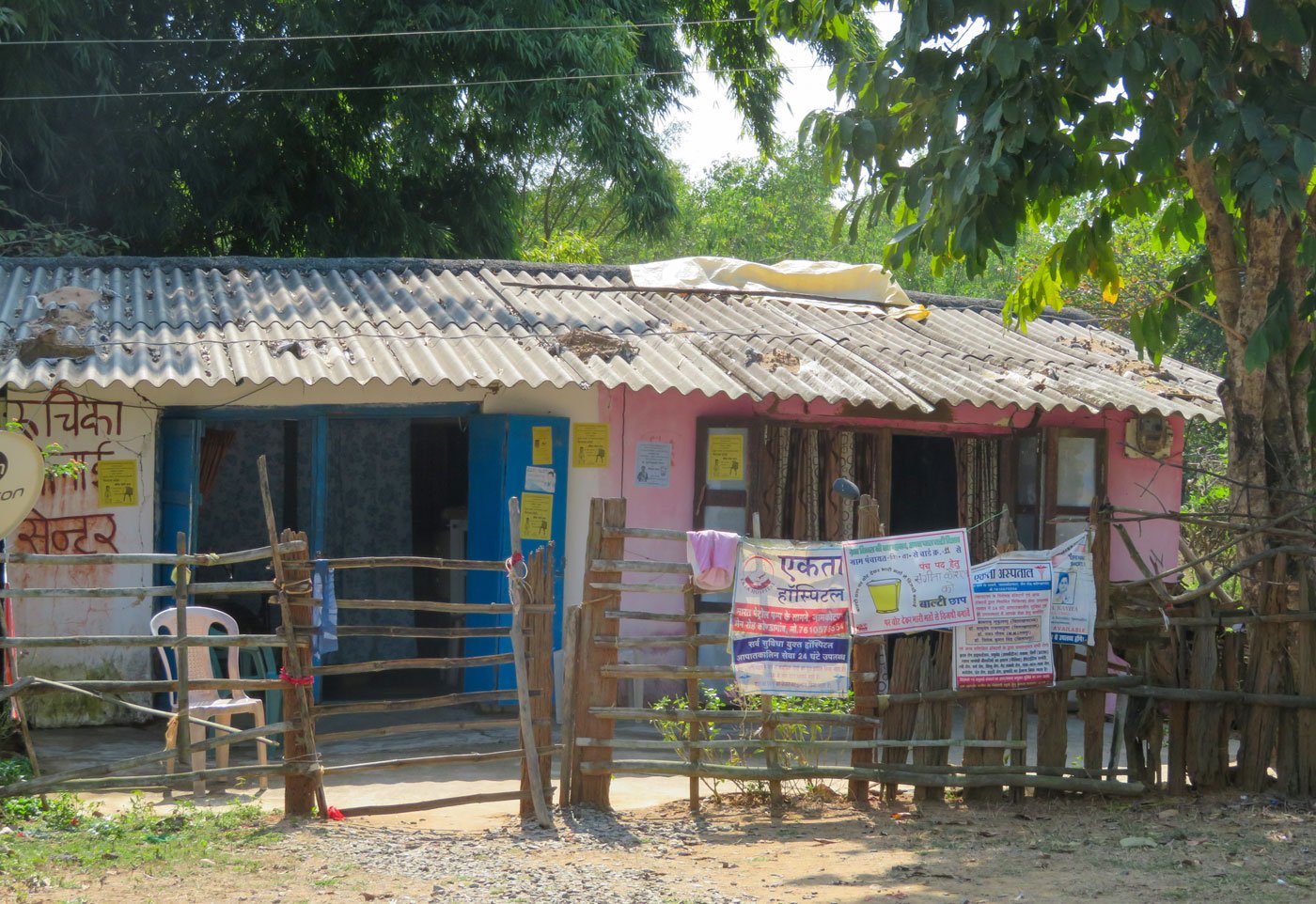
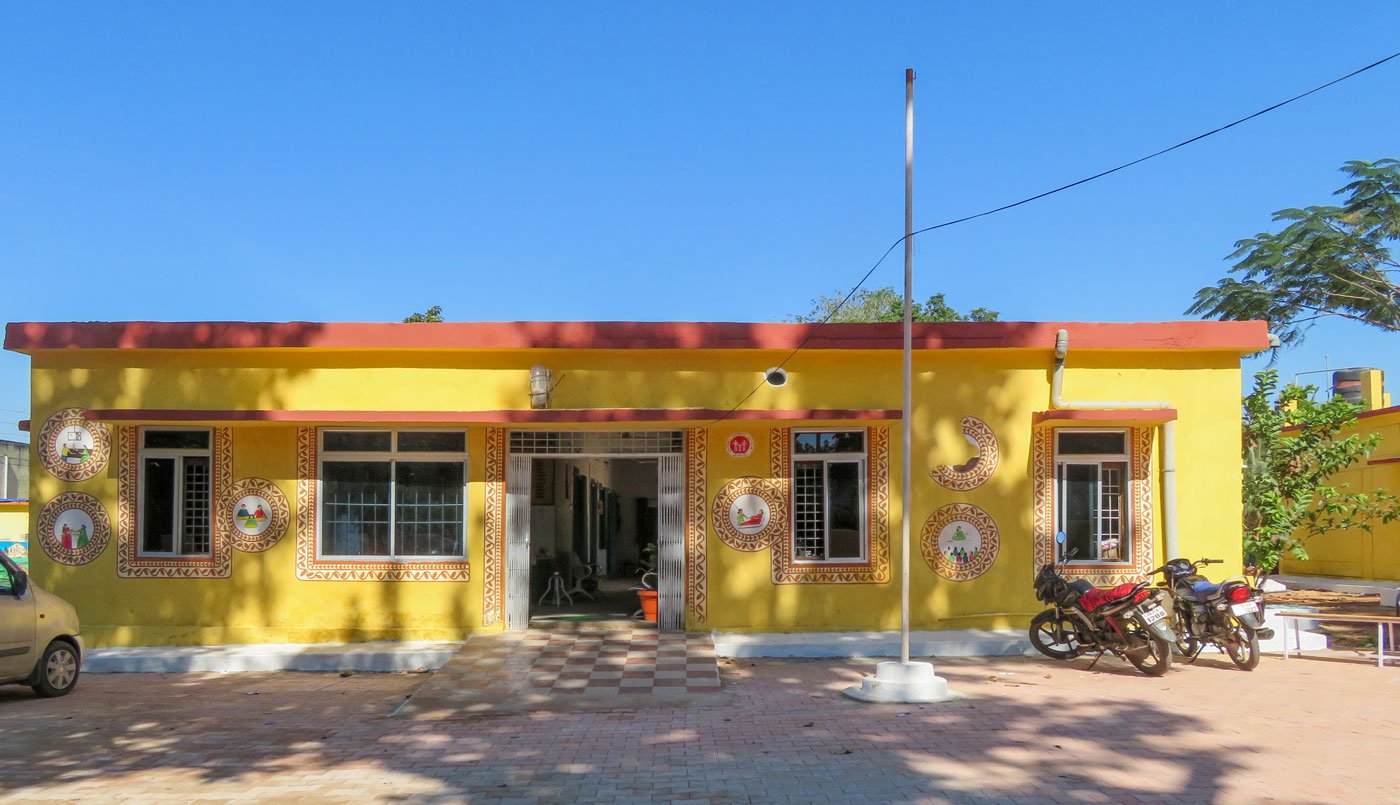
Clinics such as this, with unqualified practitioners, are the first stop for many Adiasvi women in Narayanpur, while the Benoor PHC often remains out of reach
"The Benoor PHC [in Narayanpur block] is the best-equipped and serviced in the district," says Dr. Rohit Baghel, former state maternal health consultant. "Its staff of 22 includes one doctor, one Ayush [indigenous systems of medicine] medical officer, five nurses, two lab technicians and even a smartcard computer operator."
The PHC covers patients from a 30-kilometre radius, most of them Adivasis in this district where 77.36 per cent of the population is Scheduled Tribe, primarily from the Gond, Abhuj Maria, Halba, Dhurva, Muria and Maria communities.
But, says Kamala, covering her face with a thin polka-dotted shawl as she speaks, “We didn’t know you could get such things done here.” Her three children – two girls, 12 and 9 years old, and a 10-year-old boy – were born at home with the help of a Gond Adivasi midwife. Kamala received no pre- or post-natal care. This is her first experience of institutional reproductive health services. “I have come to the hospital for the first time," she says. "I had heard they give pills at the anganwadi , but I had never gone there.” Kamala is referring to the rural health organisers (RHOs) who visit villages and hamlets to distribute folic acid tablets and conduct prenatal check-ups.
Kamala’s disconnect from the public healthcare system is not uncommon here. The National Family Health Survey-4 (2015-16), notes that 33.2 per cent of women in rural Chhattisgarh don’t have institutional deliveries. It also says that only 28 per cent of women non-users of contraceptives who, like Kamala, live in rural areas, have spoken to a health worker about family planning. The NFHS-4 further states that ‘unplanned pregnancies are relatively common’, and ‘almost one-fourth of women reporting an abortion reported having complications from the abortion’.
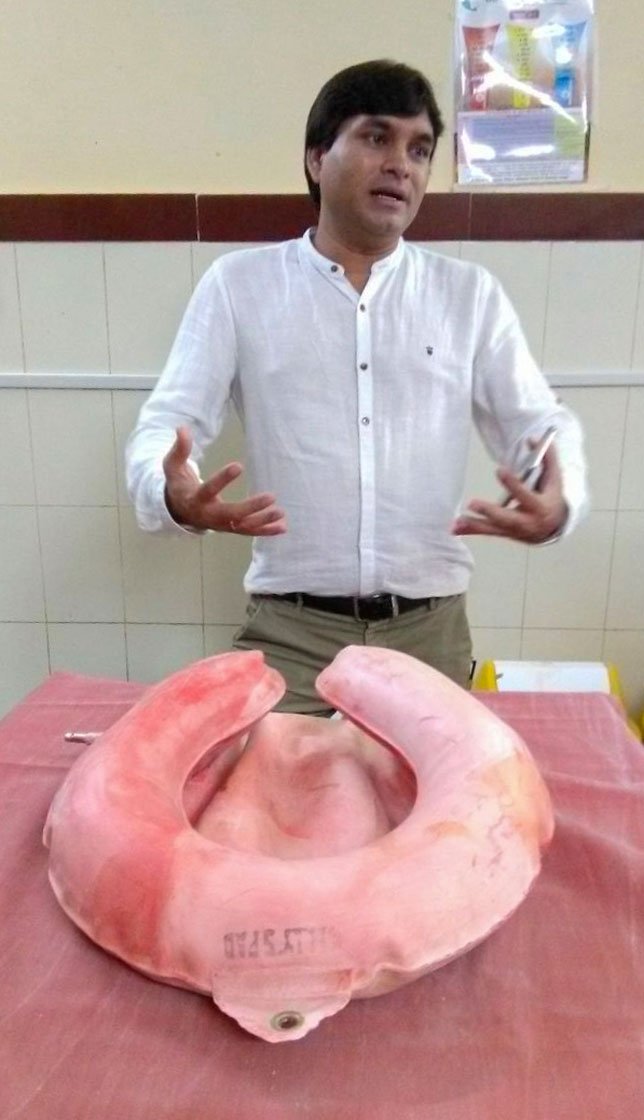
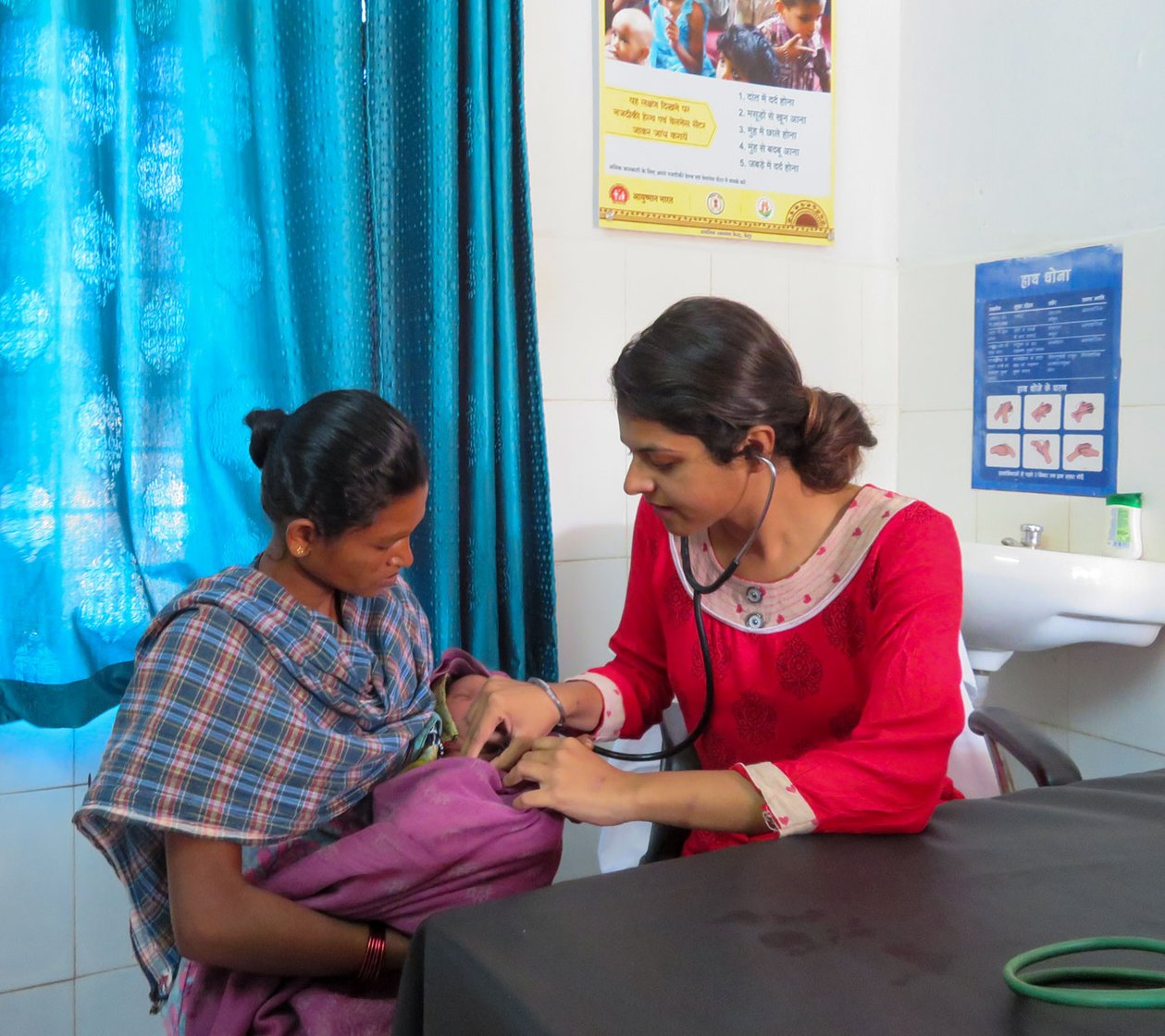
Left: Dr. Rohit Baghel, former state maternal health consultant, explaining delivery procedures to staff nurses and RMAs at a PHC. 'The Benoor PHC is the best-equipped and serviced in the district', he says. Right: Dr. Paramjeet Kaur says she has seen many botched abortion cases in Bastar
For the nearly 90 per cent of the population of Narayanpur that lives in rural areas, with poor or no road connectivity, access to reproductive healthcare remains low. Although Narayanpur district's public health network has eight PHCs, one community health centre (CHC) and 60 sub-health centres, there is a shortage of doctors. “Over 60 per cent of the posts [in the district] for specialist doctors are vacant. Outside of the district hospital there is no gynaecologist,” points out Dr. Baghel. And two PHCs – Garpa and Handawada in Orchha block – function from a single room. They have no building and no doctor on the rolls, he adds.
This forces Kamala and many other women to rely on unqualified medical practitioners for their reproductive health needs, like the ‘doctor’ Kamala consulted. “Many of our Adivasi people are not aware of who is an allopath and who is not. We have ‘ jhola chaap doctors’ who are essentially ‘quacks’ [completely unqualified dispensers of medicine] but give injections, drips and medicines, and no one questions them,” explains Pramod Potai, a Gond Adivasi, who is assistant project coordinator with Bastar-based NGO Saathi Samaj Sevi Sanstha, for a UNICEF-supported programme on health and nutrition in the district.
To meet the shortfall, the state government came up with the post of rural medical assistants (RMAs). In 2001, when Chhattisgarh was created, there were only 516 medical officers at the PHC level of a total of 1,455 sanctioned posts. The Chhattisgarh Chikitsa Mandal Act of 2001 was aimed at training healthcare practitioners for rural areas. The three-year course, originally titled ‘Practitioners in Modern Medicine & Surgery’, was re-named ‘Diploma in Alternative Medicine’ within three months. The Medical Council of India (MCI) had not been consulted, and there were legal concerns about the use of the words ‘modern medicine’ and ‘surgery’. The course included biochemic medicine, herbo-mineral medicine, acupressure, physiotherapy, magneto-therapy, yoga and flower remedies. Persons qualified as RMAs, were to be posted exclusively in rural and tribal areas with the designation of ‘assistant medical officer’.
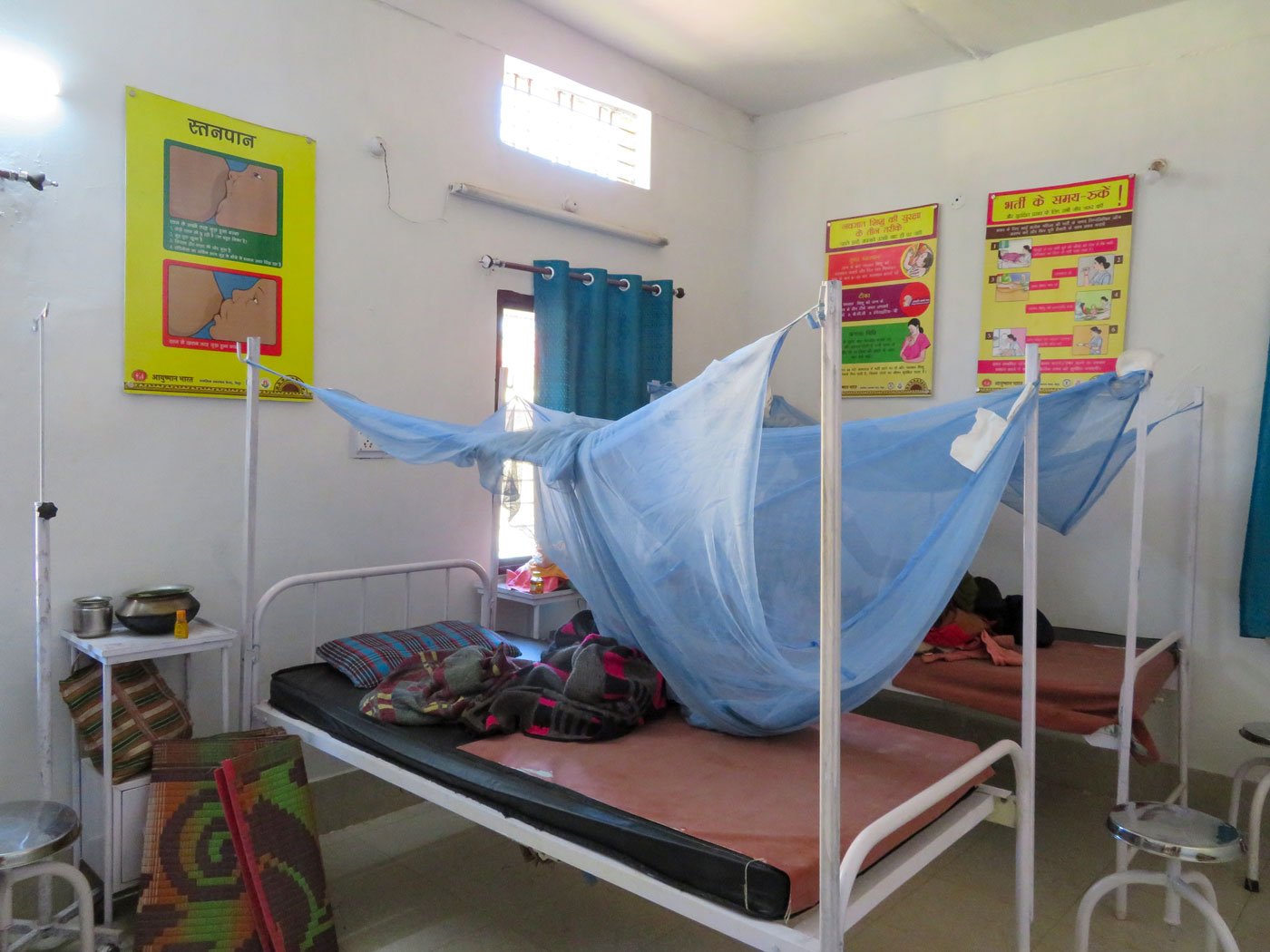
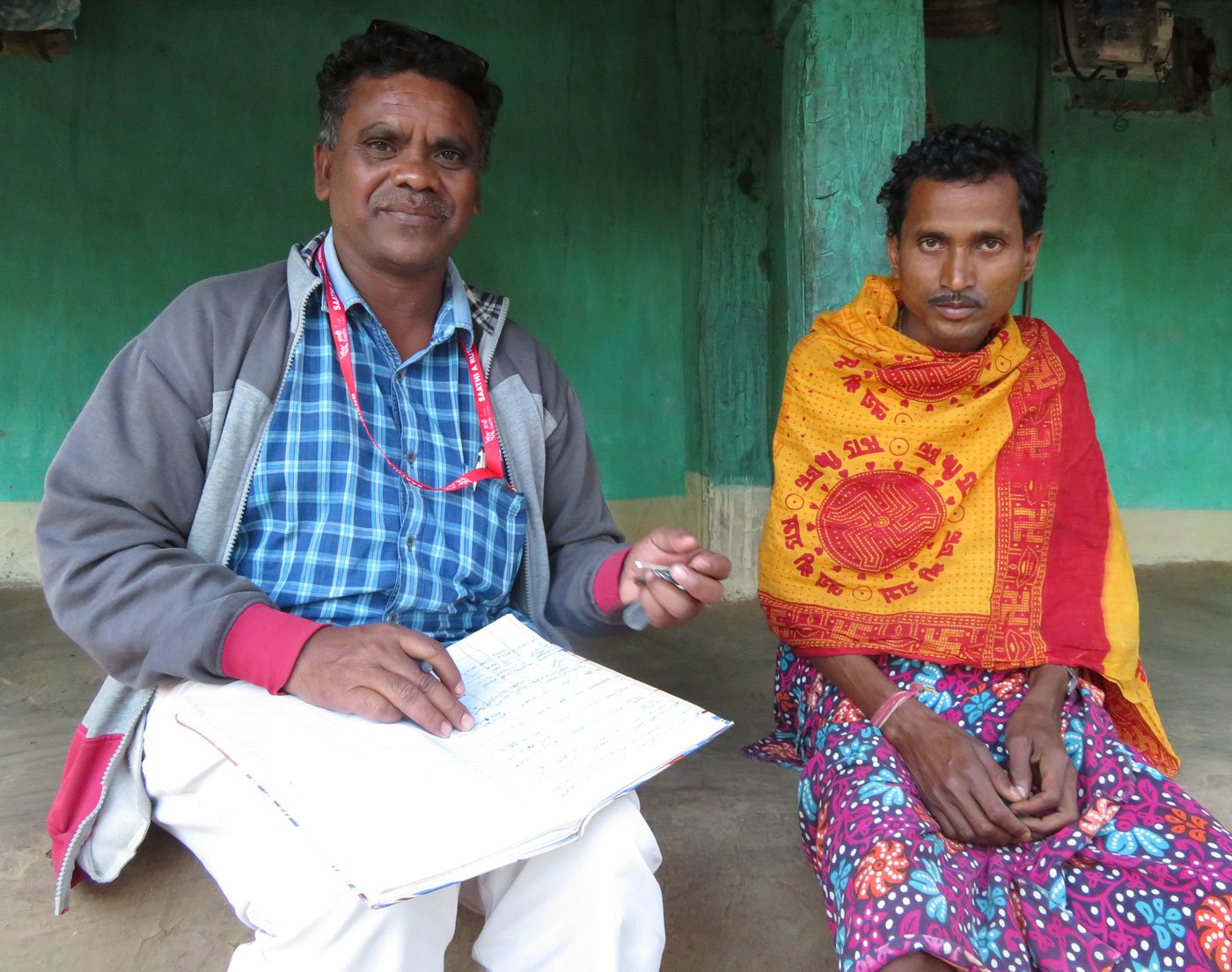
Although the Benoor PHC's maternity room (left) is well equipped, Pramod Potai (right, with the notebook), a Gond Adivasi and NGO health worker, says many in his community seek healthcare from dubious practitioners who 'give injections, drips and medicines, and no one questions them'
The MCI, however, rejected the diploma course stating that it was likely to dilute the standards of the medical profession. Three writ petitions (the first was by the Chhattisgarh state branch of the Indian Medical Association in 2001, and others by health workers’ unions, by nurses’ associations, and others) were filed in the High Court of Chhattisgarh in Bilaspur. On February 4, 2020, the court noted that the state had made a ‘policy decision’ to scrap the designation of ‘assistant medical officer’ for RMAs. The court stated that RMAs could not use the title of 'Dr.', could not work independently but only under the supervision of an MBBS doctor, and could carry out only ‘first aid/stabilisation in cases of disease/serious conditions/emergency situations’.
The RMAs though have filled a critical gap. “Given the shortage of doctors, at least those who went to 'quacks' can now approach an RMA," says Baghel. "They have some medical training and can offer simple counselling on contraception, but they cannot do anything more. Only a qualified MBBS doctor can counsel and prescribe abortion-related drugs.”
In 2019-20, Baghel notes, 1,411 RMAs were practising in the state. “We must give them some credit for the drop in maternal mortality rate and infant mortality rate," he says. The infant mortality rate in Chhattisgarh declined from 71 per thousand in 2005-06 to 54 in 2015-16, while institutional births in a public facility increased from 6.9 per cent in 2005-06 to 55.9 per cent (NFHS-4).
Kamala has no idea whether the ‘doctor’ she initially consulted was an RMA or an entirely unqualified operative. Neither is authorised to prescribe the misoprostol and mifeprestone – used to induce abortions – that she was advised. “Even MBBS doctors have to undergo a 15-day training camp on MTP at a government hospital before they are eligible to prescribe these drugs,” points out Dr. Paramjeet Kaur, the 26-year-old allopath who heads the Benoor PHC. “You have to monitor the patient so that they don’t lose too much blood and check that the abortion is not incomplete. Otherwise, it can be fatal.
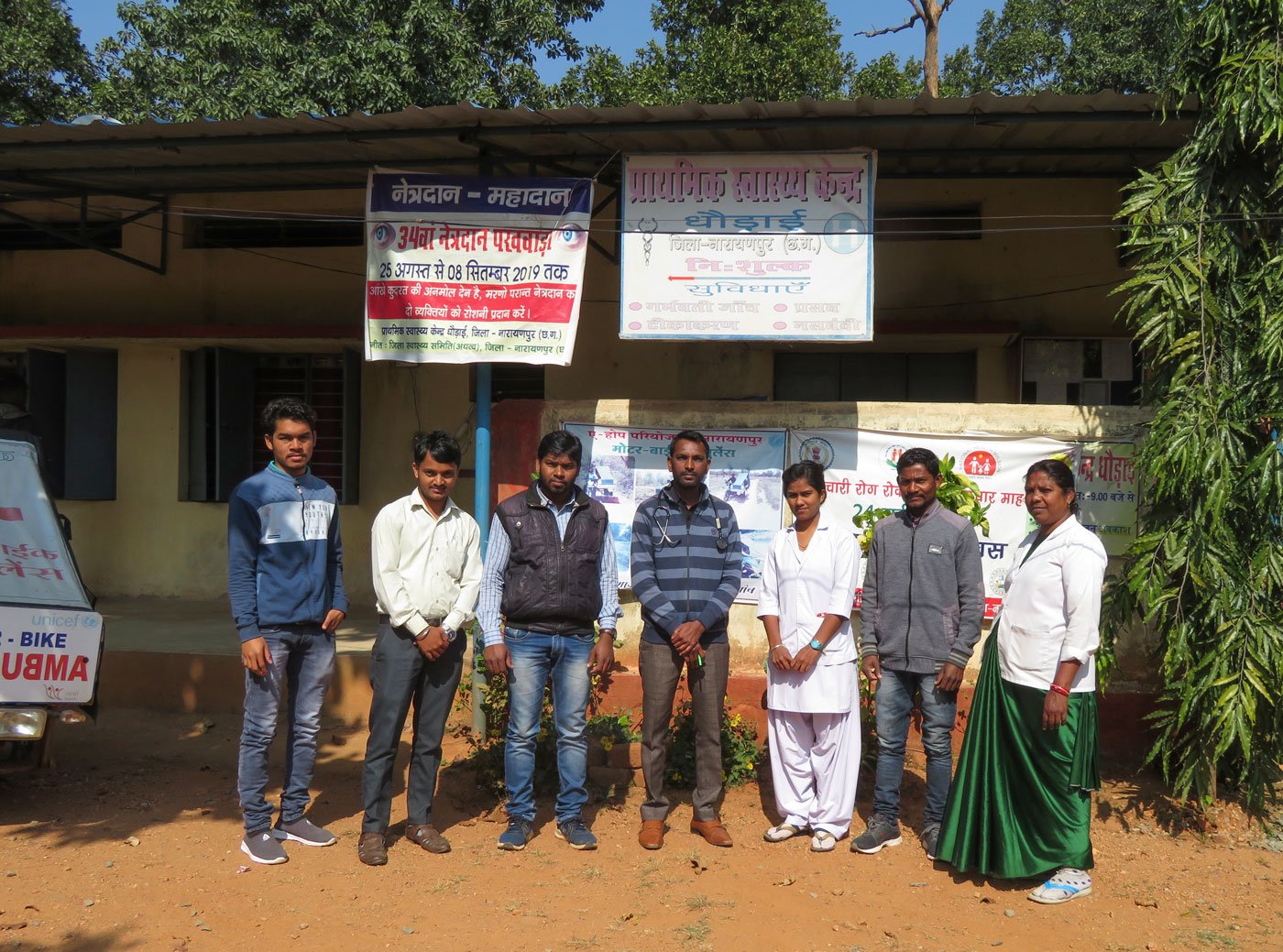

Left: 'The Dhodai PHC covers 47 villages, of which 25 have no approach road', says L. K. Harjpal (standing in the centre), the RMA. Right: To enable more women to approach public health services, the stage government introduced bike ambulances in 2014
Kaur says she has seen many botched cases like Kamala's in the nearly two years she has been posted in this part of Bastar. Her outpatient register lists an average of 60 patients a day coming in with a variety of complaints, and on Saturday (market day in the area) the number goes up to around 100. “I see many [reproductive health] cases in the OPD like this ‘repair’ case, people treated by unqualified medical personnel. An induced abortion gone wrong could end in infections, leading to infertility, serious morbidity or even death,” she says. “Most women who come don’t have any idea about all this," she adds. "They are just given a pill and sent away, when they should be checked for anaemia and blood sugar before the drugs are prescribed.”
About 57 kilometres from Benoor, at another PHC in Dhodai, Sita (name changed), a 19-year-old Halbi Adivasi, has come with her two-year-old baby. “My baby was born at home and I never consulted anyone during or after my pregnancy,” she says. The closest anganwadi – where health workers are available to do pre- and antenatal check-ups – is only a 15-minute walk from her home. “I don’t understand what they say,” she adds.
Many of the health professionals I met said language is a barrier in dispensing medical advice. Most Adivasis in rural Bastar speak either Gondi or Halbi, and understand a little Chhattisgarhi. The health professional may not be a local, or may know only one of these languages. Connectivity is another problem. The Dhodai PHC covers 47 villages, of which 25 have no approach road, says L. K. Harjpal, 38, the RMA at Dhodai. “Reaching interior areas is difficult, and language is also a problem, so we can’t do our job [of monitoring pregnancies],” he adds. “Our auxiliary nurse midwives (ANMs) find it difficult to cover all homes, they are so far apart.” To enable more women to approach public health services, the stage government introduced bike ambulances in 2014, and now five are operational in the district.
Dashmati Yadav, 22, is among those who had used the ambulance. She and her husband Prakash have a month-old daughter; they are farmers who cultivate a five-acre plot. “When I was pregnant the first time, the sirha [traditional healer] in the village told me not to visit the anganwadi or hospital. He said he would take care of me. But my baby boy died immediately after birth at home," Dashmati says. "So this time my husband called the ambulance and I was taken to Benoor for my delivery.” The PHC, 17 kilometres from her hamlet, has an ambulance called the Mahatari Express (‘Mahatari’ means ‘mother’ in Chhattisgarhi) that can be booked by dialling 102. Dashmati's baby girl is doing well, and the mother is all smiles as she speaks.
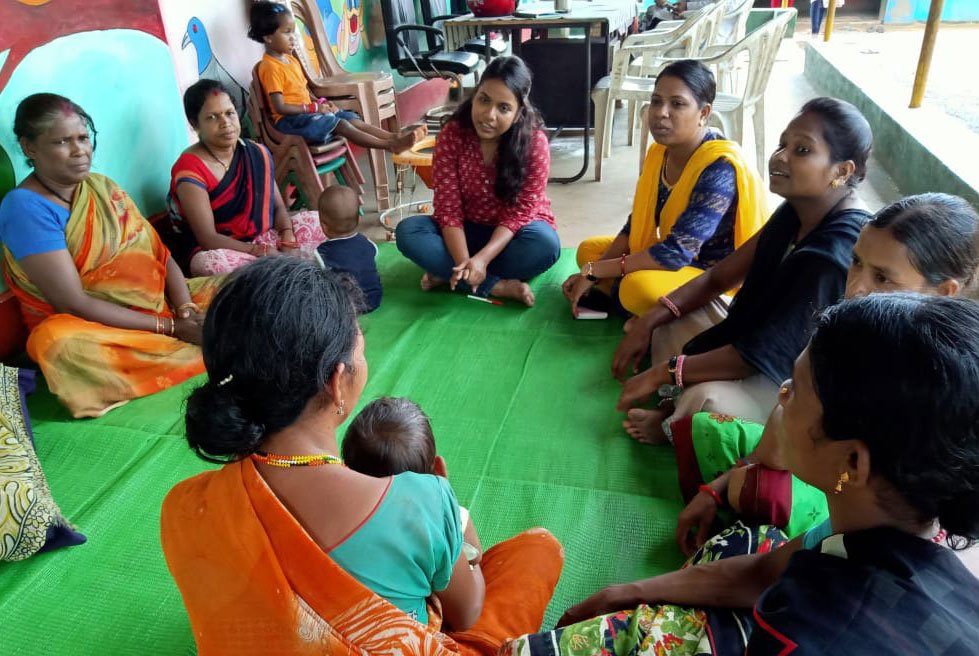
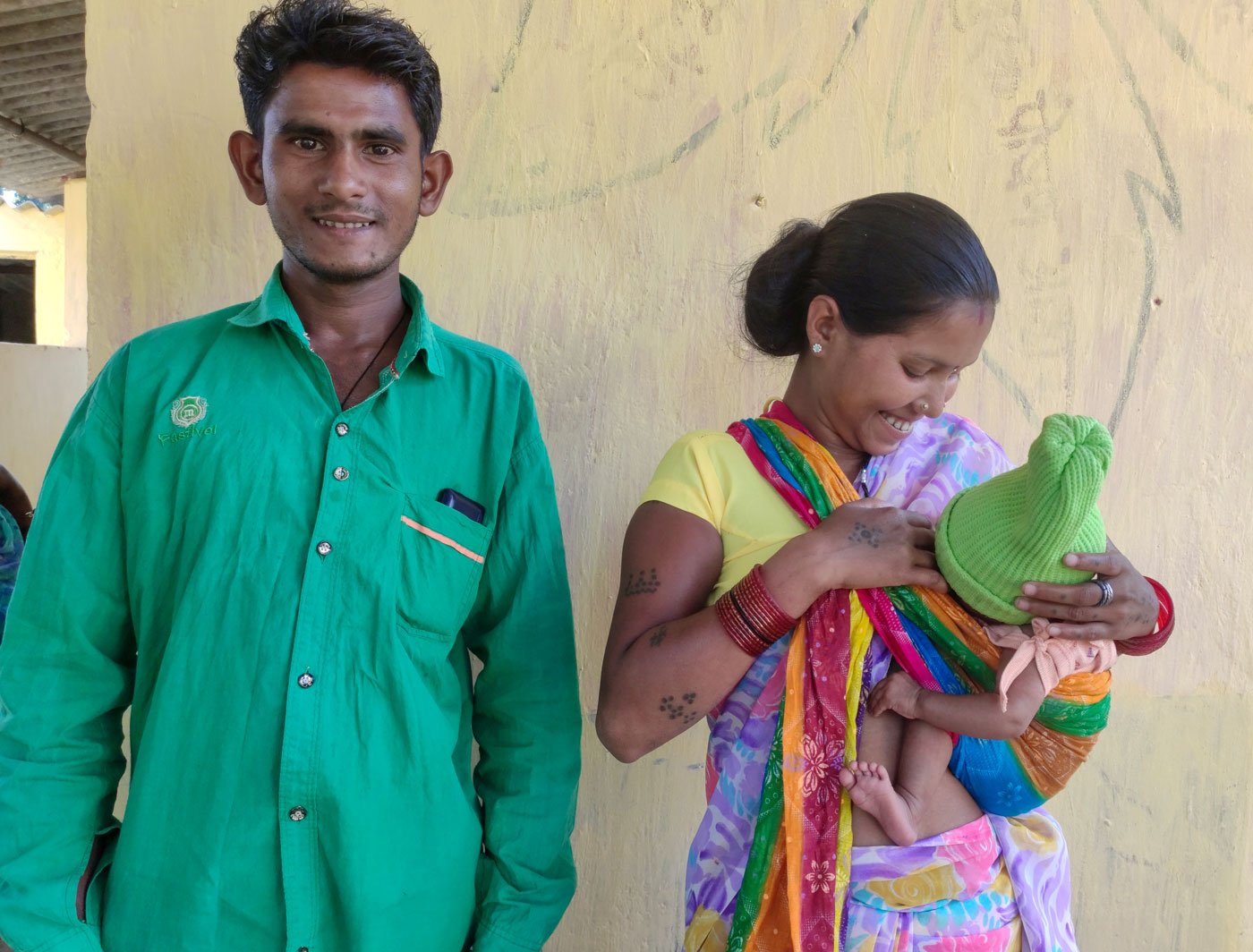
Left: Dr. Meenal Indurkar, district consultant for health in Narayanpur, speaking to young mothers about malnutrition. Right: Dashmati Yadav (with her husband Prakash and their baby girl), says, '...my baby boy died after birth at home. So this time my husband called the ambulance and I was taken to Benoor for my delivery'
“To encourage more women to deliver in hospital, the Janani Shishu Suraksha Karyakram was launched [by the central government] in 2011, offering travel costs to a hospital, free hospital stay, free food, and medicines as needed," says Dr. Meenal Indurkar, district consultant for health in Narayanpur. “And the Pradhan Mantri Matru Vandana Yojana offers a cash incentive of 5,000 rupees for a mother who completes four antenatal check-ups, delivers in an institution, and completes her newborn’s immunisations," she adds.
At the Benoor PHC, while Kamala awaits her MTP, Ravi appears with a cup of tea for his wife. Dressed in a long-sleeved shirt and blue jeans, he discloses that they have not informed their family why they are at the health centre. “We will tell them later,” he says. “We have to raise three children; we cannot afford another.”
Kamala was orphaned young and was brought up by her paternal uncle who also arranged her marriage. She had not seen her husband before the wedding. “I was married soon after my first period. That’s how it is in my community. I had no idea what happens in a marriage. About my period, my aunt only said ‘ date aayega ’ [the 'date' or period will come]. I never went to school and I can’t read, but my three children are all attending school,” she says, proudly.
Kamala intends to return to the PHC after a few months for a tubal ligation (sterilisation) procedure. Her husband will not consider a vasectomy because he believes it will impair his virility. Kamala has only just heard about concepts like contraception and sterilisation on this visit, but she has absorbed it all quickly. “The doctor told me that if I don’t want to keep getting pregnant, this is an option,” she says. Kamala's education in family planning techniques has begun in her mid-30, after she has had three children, and when a surgery will stop her reproductive cycle altogether.
The reporter would like to thank Bhupesh Tiwari, Avinash Awasthi and Vidushi Kaushik for their support and help with this story .
PARI and CounterMedia Trust's nationwide reporting project on adolescent girls and young women in rural India is part of a Population Foundation of India-supported initiative to explore the situation of these vital yet marginalised groups, through the voices and lived experience of ordinary people.
Want to republish this article? Please write to [email protected] with a cc to [email protected]
